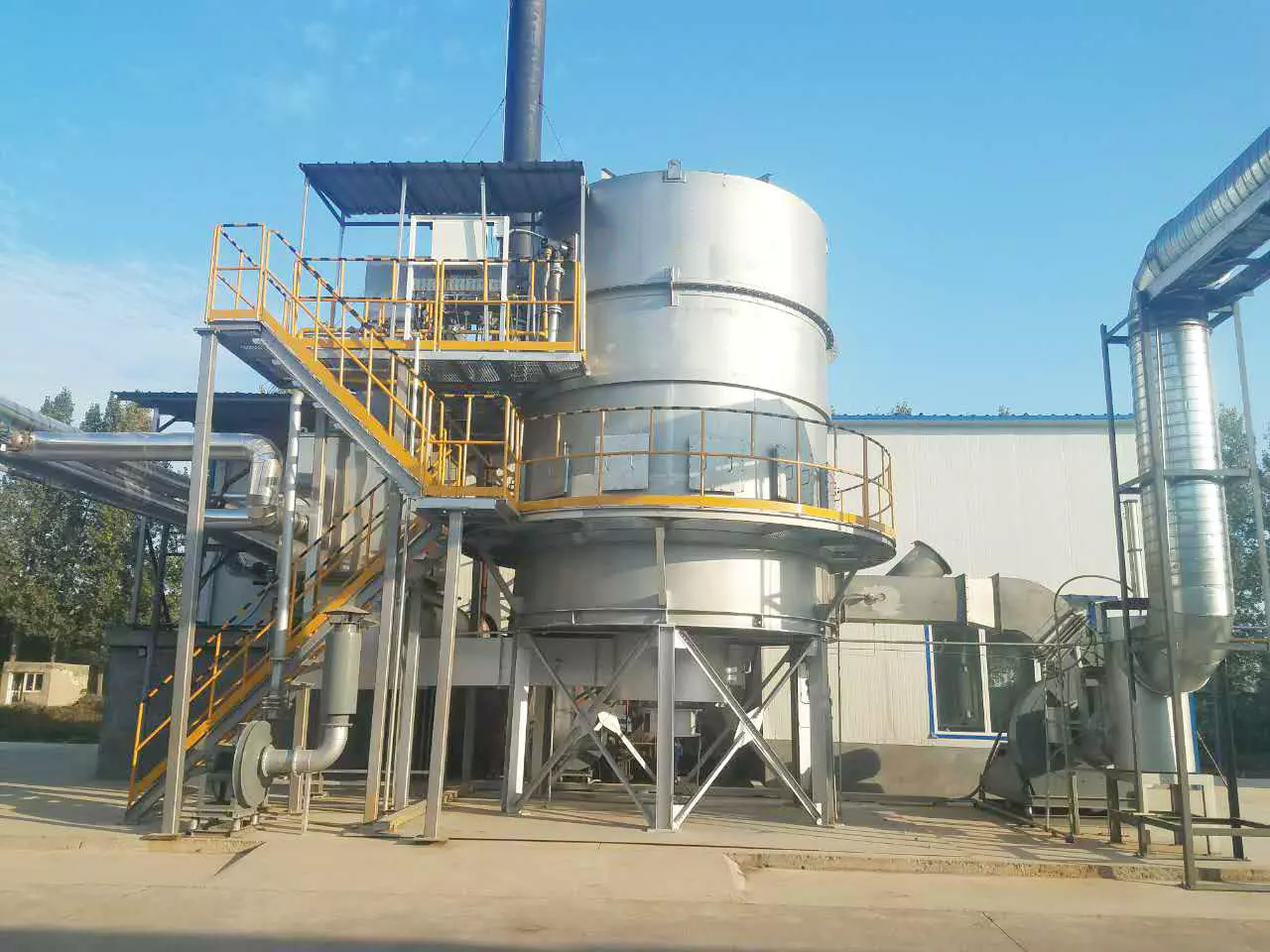Recuperative Thermal Oxidizer for VOCs
Introducción
Recuperative thermal oxidizers are advanced industrial air pollution control systems designed to efficiently remove volatile organic compounds (VOCs) from process exhaust streams. By utilizing a combination of heat recovery and combustion technologies, these systems play a crucial role in reducing emissions and ensuring environmental compliance in various industries. In this article, we will explore the key aspects and benefits of recuperative thermal oxidizers for VOC abatement.
Working Principle
– Thermal Oxidation: Recuperative thermal oxidizers employ the principle of thermal oxidation to break down VOCs into carbon dioxide and water vapor through high-temperature combustion.
– Heat Recovery: These systems feature a heat recovery mechanism that captures and utilizes the thermal energy generated during the oxidation process. This heat is then transferred to the incoming VOC-laden air, significantly reducing energy consumption.
– Recuperative System: The heart of a recuperative thermal oxidizer is the recuperator, which acts as a heat exchanger. It preheats the incoming process air using the hot flue gases from the combustion chamber, enhancing energy efficiency.
Design and Components
A typical recuperative thermal oxidizer consists of several key components:
– Combustion Chamber: This is where the VOC-laden exhaust gases are introduced and subjected to high temperatures for oxidation.
– Recuperator: The recuperator facilitates heat transfer between the hot flue gases and the incoming process air, maximizing energy recovery.
– Burners: These provide the necessary heat for the oxidation process by combusting fuel, such as natural gas or diesel.
– Control System: An advanced control system ensures optimal performance, monitors key parameters, and regulates the overall operation of the thermal oxidizer.
Advantages and Applications
– Superior VOC Destruction Efficiency: Recuperative thermal oxidizers offer high VOC destruction efficiencies, typically exceeding 99%. This ensures the effective removal of hazardous pollutants from industrial exhaust streams.
– Energy Efficiency: The incorporation of heat recovery technology enables these systems to achieve energy savings of up to 50%, making them a cost-effective solution for VOC abatement.
– Wide Application Range: Recuperative thermal oxidizers are widely used in industries such as chemical manufacturing, pharmaceuticals, printing, automotive, and food processing, where VOC emissions are a concern.
– Compliance with Regulations: These systems help industries comply with stringent environmental regulations related to VOC emissions, safeguarding both public health and the environment.
Conclusión
Recuperative thermal oxidizers play a vital role in mitigating the environmental impact of VOC emissions from industrial processes. Their combination of high VOC destruction efficiencies and energy recovery capabilities make them an optimal choice for companies seeking to minimize their carbon footprint and ensure regulatory compliance. By investing in recuperative thermal oxidizers, industries can achieve sustainable and responsible production while simultaneously benefitting from reduced operating costs and improved environmental stewardship.
 Oxidador térmico recuperativo” />
Oxidador térmico recuperativo” />
Presentación de la empresa
We are a high-tech enterprise that specializes in comprehensive treatment of volatile organic compounds (VOCs) waste gas, carbon reduction, and energy-saving technology equipment manufacturing. We have four core technologies in thermal energy, combustion, sealing, and self-control. Additionally, we have the ability to simulate temperature fields and airflow fields, as well as model calculations. We also possess the capabilities to evaluate the properties of ceramic thermal storage materials, select zeolite molecular sieve adsorption materials, and test the high-temperature combustion and oxidation characteristics of VOCs. We have built an RTO technology R&D center and a waste gas carbon reduction engineering technology center in Xi’an and a 30,000-square-meter production base in Yangling. We are a leading manufacturing enterprise for RTO equipment and zeolite molecular sieve rotary equipment worldwide. Our core technology team comes from the Aerospace Liquid Rocket Engine Research Institute (Aerospace Sixth Academy). We have over 360 employees, including over 60 R&D technology backbones, three senior engineers at the research level, six senior engineers, and 28 thermodynamics Ph.Ds.
Our core products are the rotating valve thermal storage oxidation incinerator (RTO) and the zeolite molecular sieve adsorption and concentration rotary wheel. Combined with our expertise in environmental protection and thermal energy system engineering, we can provide customers with comprehensive solutions for industrial waste gas treatment, energy utilization, and carbon reduction for various working conditions.
Certifications, Patents, and Honors
We are certified in knowledge intellectual property management systems, quality management systems, and environmental management systems. We have qualifications in construction industry enterprises and are a high-tech enterprise. We have patents for rotating valve thermal storage oxidation furnaces, rotary wing thermal storage incineration equipment, and disc zeolite rotary wheels. We have also received numerous honors for our outstanding achievements.

Choosing the Appropriate RTO Equipment
- Determine the characteristics of the waste gas.
- Understand the local regulations and set emission standards.
- Evaluar la eficiencia energética.
- Considere la operación y el mantenimiento.
- Analyze budget and cost.
- Elija el tipo de RTO apropiado.
- Considere los factores ambientales y de seguridad.
- Realizar pruebas de rendimiento y verificación.
It is essential to consider each point in detail when selecting the appropriate RTO equipment. The characteristics of the waste gas, local regulations, and energy efficiency are crucial factors to consider. Operation and maintenance, budget and cost, and the type of RTO are also essential factors to consider. Environmental and safety factors must also be taken into account, and performance testing and verification should be performed.

Service Process
- Consultation and evaluation: preliminary consultation, on-site inspection, and needs analysis.
- Design and plan formulation: program design, simulation and modeling, and program review.
- Producción y fabricación: producción personalizada, control de calidad y pruebas en fábrica.
- Installation and commissioning: on-site installation, commissioning, operation training, and service.
- Soporte postventa: mantenimiento periódico, soporte técnico y suministro de repuestos.
We are a one-stop solution with a professional team that can tailor an RTO solution to meet customer needs. We provide comprehensive services throughout the entire process, from consultation and evaluation to after-sales support.
Autor: Miya
